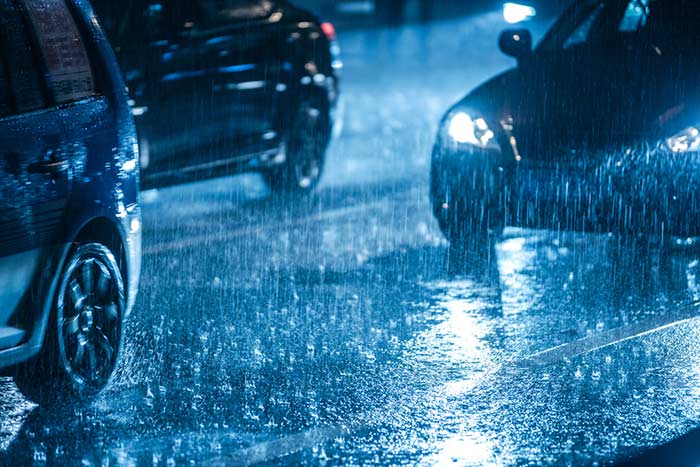
Even if you live in the driest of climates, it’s inevitable that at some stage you will find yourself driving in the rain, it’s something we all have to deal with every now and then. While modern motor vehicles are fitted with all the latest features designed to increase safety in all conditions, driving in the wet also requires a more cautious style of driving to that suitable on dry roads. At Safe T Tyre, our mission is for every vehicle in Australia to have access to the best quality tyre pressure sensors and monitoring systems (TPMS) to ensure everyone can complete their journey safely. Wet-weather driving demands you to drive much slower, however, there are a few other things you can do ensure you arrive safely in the rain.
Check Your Tyre Tread
Imperative in all driving conditions, but never is it more important than in the rain. Tyre tread acts as channels through which water is dispersed. Tyres should have plenty of tread depth to evacuate standing water from between the road surface and your tyre. If your current tyres are worn down to anywhere near the wear bars (2.5mm or 3.0mm), the water can become stuck between the road and the rubber, causing you to lose traction.
Keep Your Tyres Inflated Properly
Tyre pressures that are too low or too high can lead to premature tread wear, tyre damage and importantly for wet weather driving, reduced traction. When roads are wet, it is crucial you have the right traction to ensure your tyres have maximum contact with the road. Check your tyre pressure regularly (at least once a month) to make sure they’re properly inflated or invest in tyre pressure sensors to give you extra peace of mind.
Make Sure Your Wipers Are in Good Working Order
A heavy downpour can dramatically decrease visibility and can impede our ability to judge distances.
Being able to see the road in wet conditions is critical to a safer driving experience. Worn rubber on wiper blades can leave patches of water on the windscreen that reduce visibility, so check the state of your wipers regularly. If they leave streaks on your windshield, it’s time to replace them.
Avoid Large Puddles of Water
Driving through large pools of water can cause serious damage to your car. It is usually very difficult to determine the depth of a large puddle, especially when the water is muddy. Puddles could be concealing a large pothole, which could damage a rim or knock your suspension out of alignment. Additionally, water splashing up into your car’s engine compartment may damage the internal systems. If you can’t safely gauge the depth, try to avoid it. However, if you are not in a position to avoid it, brake with control and traverse it slowly.
In Very Heavy Rain, Pull Over
If the rain is so heavy and your visibility is uncomfortably poor, stop and wait for the rain to ease off.
Heavy rain can overload your wiper blades, causing a constant sheet of water to flow over the screen, making visibility close to zero and significantly impacting your safety. Be careful to pick a safe spot to pullover as everyone’s visibility is dramatically reduced. Try to pull into a rest area, but if pulling over on the roadside is your only option, keep your headlights and hazard lights on.
Other Tips
- For foggy windows, use the air conditioner to dehumidify the air inside of your vehicle or wind down your rear windows a little to allow air to circulate.
- Keep a further distance from the car in front of you since braking distances are longer on wet roads.
- Drive with smooth steering as a sudden change in steering direction can easily lead to loss of control in the wet.
To maximise the safety of your vehicle in any conditions, rain, hail or shine, a TPMS with top quality tyre pressure sensors should be part of your car’s inventory and safety equipment. For the best TPMS get in touch with the team at Safe T Tyre today by calling 1800 876 700 or contacting us online. As an Australian owned company, the safety of every Australian is our number one priority.

